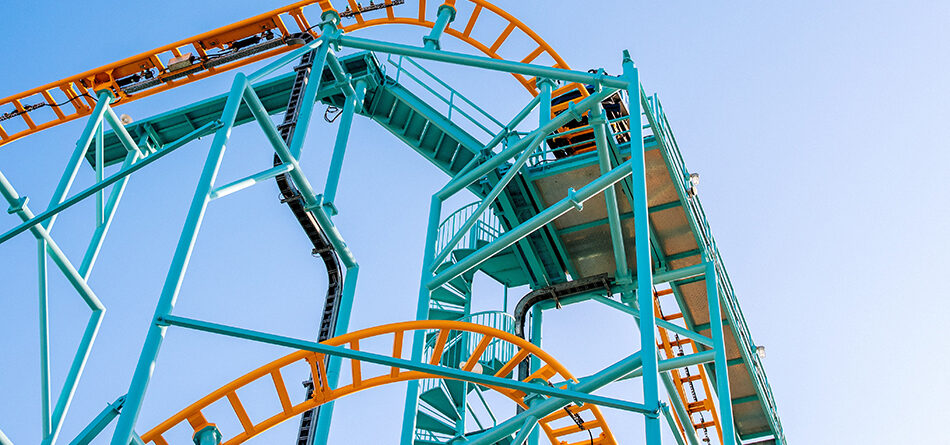A Deep Dive on the CBOE Volatility Index (VIX)
The CBOE Volatility Index (VIX) was launched in 1990 to measure the implied volatility of the S&P 500 Index, based on the pricing of near-term puts and calls expiring in 30 days. This approach created a market-based gauge of trader sentiment and expectations. Commonly referred to as the “fear index,” the VIX rises when investors seek protection during times of uncertainty.
Since its inception, the VIX has averaged 19.5 and tends to revert toward this mean over time. However, it can remain well above or below that level for extended periods. When investor anxiety increases, demand for downside protection rises, pushing the VIX higher.
Volatility moves tend to be gradual, particularly on the way down. As equities begin to sell off, the VIX typically starts creeping upward. A market catalyst—such as an economic shock or policy surprise (e.g., tariffs)—can then trigger a sharper decline in stocks and a rapid spike in the VIX, often pushing it above 30. These episodes are typically associated with investor capitulation. Notably, only 8.3% of trading days have registered a VIX above 30, and about half of those occurred during major economic downturns (2000–2002, 2008–2009, and 2020).
Since 1990, there have been 31 instances when the VIX climbed above 30 for the first time in at least 30 days. These occurrences serve as markers of fear re-entering the market after a cooling-off period. On average, such spikes happen after the S&P 500 has already declined nearly 15% and is roughly halfway through a broader market drawdown. Historically, forward equity returns following these events have been strong—with the notable exceptions of prolonged bear markets like the Tech Bubble (2000–2002) and the Global Financial Crisis (2007–2009).
While market declines are never pleasant, they are a natural part of long-term investing and often lay the foundation for the next rally. A sharp rise in the VIX—while unsettling—can be interpreted as a bullish contrarian signal, indicating widespread fear and potential market bottoms. As Warren Buffett famously said: “Be fearful when others are greedy and be greedy when others are fearful.”
DISCLOSURE
Innovative Portfolios, LLC (“IP”) is an SEC-registered investment advisor founded in 2015. Clients or prospective clients are directed to IP’s Form ADV Part 2A prior to deciding to participate in any portfolio or making any investment decision. The views and opinions in the preceding publications are subject to change without notice and are as of the date of the report. There is no guarantee that any market forecast set forth in any commentary will be realized. This material represents an assessment of the market environment at a specific point in time, should not be relied upon as investment advice, and is not intended to predict or depict performance of any investment. Any specific recommendations or comparisons that are made as to particular securities or strategies are for illustrative purposes only and are not meant as investment advice for any viewer. The companies mentioned in the publications may be held by Sheaff Brock Investment Advisors, Innovative Portfolios, Innovative Portfolios’ ETFs or any other affiliates or related persons. Therefore, there is a conflict of interest that the advisors may have a vested interest in the Companies and the statements made about them. Past performance does not guarantee or indicate future results.











